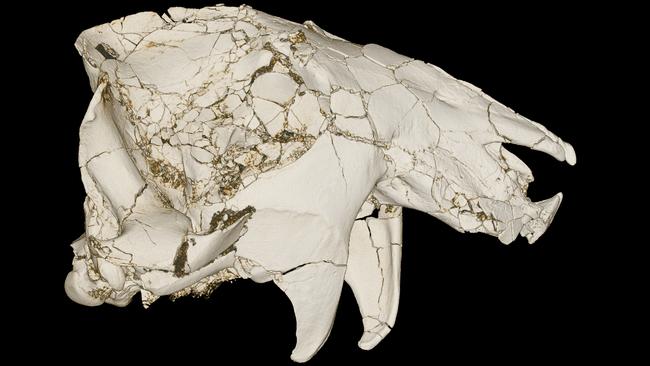Pennsylvania’s Punxsutawney Phil may not be a direct descendant of the ‘bizarre’ furry creature whose fossils were discovered in Madagascar; still, weighing in at a hefty 20 or more pounds, it would have cast off quite a shadow.
David W. Krause, a professor of anatomical sciences, unveiled a model of the head during a lecture on his find Wednesday at Stony Brook University Hospital. Krause, who also is a paleontologist, said his newly identified creature looked like a giant groundhog.
The discovery of this prehistoric skull suggests furry creatures of considerable size roamed Earth alongside the dinosaurs. The skull is very well preserved and dates back somewhere between 66 and 70 million years ago, a significant date because it places it as being alive at the same time as dinosaurs. Prior to this discovery, only two mammal fossils from the dinosaur era have been found in the Southern Hemisphere, both of which were much smaller than this recent find.
This fossil, named Vintana sertichi, is both a new genus and new species, which scientists hope will answer many key questions about the way such animals evolved.
The cranium measures 5 inches long, and scientists suggest that the mammal weighed 20 – 30 pounds. During the age of the dinosaurs the world was ruled by reptiles, with most mammalia being no bigger than shrews or moles. Based on the evidence, scientists have suggested that Vintana sertichi belonged to a group of mammals known as gondwanatheria. Very little is known about this species because the only evidence of their existence prior to this find was a few teeth and some jaw fragments. Now this skull shows the gondwanatheria were closely related to multituberculates, another evolutionary group of early mammals found in the Northern Hemisphere.
To provide people a way to conceptualize what Vintana may have looked like, many are comparing it to that of a large groundhog. This is just a loose comparison as Vintana has no living descendants. While the creature is still shrouded in mystery, the skull still brings many new questions to the way these animals progressed through time.















